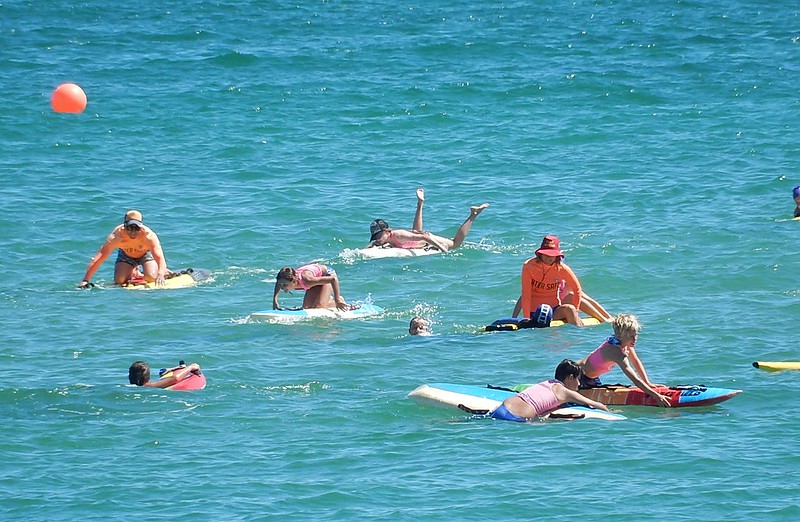Swimming is great fun and good exercise for your children, but it’s essential to understand and practice water safety so they can enjoy it safely. Whether spending the day at a lake, the public pool, or a friend’s backyard oasis, understanding basic water safety can help keep everyone safe. Our team at Crème de la Crème of Sugarloaf invites you to learn more about keeping your loved ones safe around water.
Why Is Water Safety Important?

Drowning is the number one cause of death for children ages 1 to 4 in the United States, according to the Centers for Disease Control and Prevention. It’s also the second leading cause of death for children ages 5 to 14, resulting in more deaths than motor vehicle accidents. Sadly, child deaths from drowning often happen close to home, in backyard swimming pools.
A recent study by the U.S. Consumer Product Safety Commission found that there’s been a rise in fatal child drownings, with fatal drownings in spas and pools averaging 379 children per year. Here are some water safety tips to keep you and your children safer in the water:
Take Swimming Lessons
Ensuring your children learn to swim is one of the best preventive measures for drowning. You should make sure you know how to swim too. If you don’t, you must also take lessons. Check out the USA Swimming Foundation for free or low-cost swimming lessons in your area. This is a great resource where you can enter your zip code to see swimming class offerings in Sugarloaf, Duluth, Georgia.
Learn To Perform CPR
Knowing CPR can be the difference between life and death. If your child is in danger in the water, performing CPR could save their life. Sometimes emergency medical technicians and paramedics can’t arrive in time, so you must know how to help your child. You can find CPR Training with the Red Cross near you.
Supervise Your Child
Even after your child learns to swim, you should always supervise them in the water. Your child could get tired while playing and be unable to keep themselves above water, or they could slip and fall. If you’re not looking, they could play risky games in the water, such as roughhousing or holding their breath underwater.
Another key to proper supervision is not drinking alcoholic beverages while your kids are in the water. Having beer, wine, or cocktails at a backyard barbecue can be tempting, but your child’s safety is more important. You’d never be able to forgive yourself if something happened to them because you weren’t fully alert.
Extra Eyes Mean Extra Safety
When taking your child swimming at a public pool or beach, choose the one with an on-duty lifeguard. This way, another adult will also be watching them. Lifeguards are also trained, so you can count on them to assist if your child has any trouble in the water.
Put a Fence Around Your Pool
According to the Centers for Disease Control and Prevention, installing four-sided fencing around your pool prevents over half of the deaths from drowning in young children. The most effective fence needs to be at least 4 feet high, with latches beyond the reach of kids. Fence gates should open outward and be self-latching.
Designate a Watcher for Swimmers
An adult designated as a water watcher will focus completely on the children in the water. They must agree not to text, make phone calls, read, or get distracted by an activity or conversation. Alternating turns as water watchers will ensure that you can supervise the children continually.
Designating a watcher helps avoid the scenario where adults think everyone is watching the children. If every adult wrongfully assumes that someone else is watching the swimmers, the children can end up completely unsupervised. This is always a risk at a backyard pool party and barbecue, as some adults will get caught up in what they’re doing. Choosing one person at a time to watch prevents unfortunate accidents from occurring.
Never Leave a Child Unattended in the Water
Bathtubs and pools can be extremely dangerous, especially for smaller children, who can quickly slip under the water and drown. Too many parents and guardians who went away for “just a second” returned to find that tragedy had struck.
Teach Your Child About Water Safety
Talk to them, and ensure they know they should only go in the water with an adult present. Let them know this isn’t only a rule for pools but also applies to bathtubs, hot tubs, Jacuzzis, spas, fountains, decorative ponds, or buckets.
Use Proper Safety Devices Only
Keep your child from using water wings, inner tubes, floaties, and noodles, as a substitute for proper protection in the water. This is true of all air-filled or foam toys as well. Only life jackets provide them with adequate safety and protection from drowning.
Practice Additional Outdoor Water Safety
Swimming in natural bodies of water poses additional risks. Beware of hazards for children, such as dangerous waves or currents in lakes, rivers, and oceans. Limited visibility, rocks, and vegetation can also pose problems. Weather conditions can also be unpredictable, with rapid changes bringing heavy rains, including thunderstorms, lightning strikes, strong winds, and dangerous flash floods. Always check local forecasts before embarking on any water adventures. This applies to kayaking, paddleboarding, surfing, tubing, boating, or canoeing.
Remain Vigilant
Children can be in distress in the water without showing any signs. There won’t always be cries for help or splashing around. Your child can slip under the water quietly. Don’t rely on your ears to clue you into danger. Visually-impaired individuals should ensure someone else is present to help watch the children.
Contact Crème de la Crème Today
Our team at Crème de la Crème of Sugarloaf in Duluth, Georgia, encourages you to follow these water safety guidelines so that you and your family can enjoy your time in the water safely. If you have more ideas or other safety tips to keep your children safer in the water in the Sugarloaf, Duluth area, contact us at 678-973-4107 and we’d be happy to add it to the list.
Water Safety Class by Michael Coghlan is licensed with CC BY-SA 2.0
